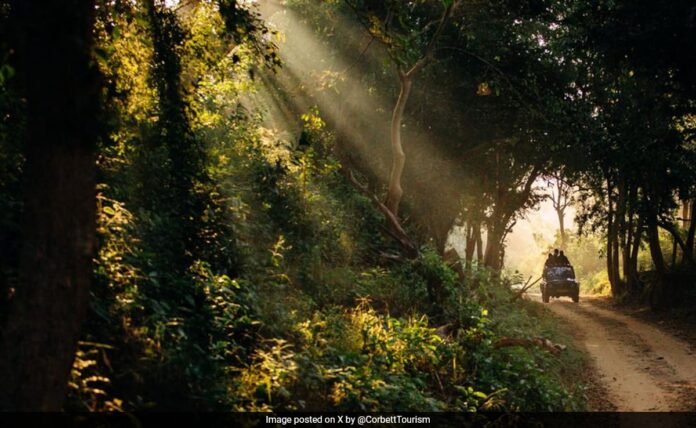The government has refuted the allegations of surveillance of women in Corbett reserve (Representational)
Local women living near one of India’s best-known tiger reserves feel they are being watched in the forest under the guise of wildlife conservation. For these women, the forest has been central to their lives – from gathering firewood to escaping a patriarchal setup at home – but now, they feel the society’s male gaze has extended to the forest areas.
A study has found that cameras and drones planted in Corbett National Park in Uttarakhand for wildlife conservation are being deliberately misused by local government officials to surveil women without consent. The government has refuted the allegations but has also ordered a probe to look into the study’s claim.
“The use of digital technologies for forest governance, such as camera traps and drones, tends to transform these forests into masculinised spaces that extend the patriarchal gaze of society into the forest,” wrote Trishant Simlai, lead author of the study published in the journal Environment and Planning F.
Mr Simlai, a researcher from the University of Cambridge in the UK, spent 14 months interviewing 270 residents, including several women, around the tiger reserve.
‘The Voyeuristic Gaze’
Interviews with local social activists and forest produce collectors revealed that some forest personnel secretly deploy camera traps in ‘nullahs’ (dry stream beds), used by women to enter forest spaces.
In 2017, a photo of a woman relieving herself was inadvertently captured by one such camera trap. Some young men, appointed as temporary forest personnel, circulated the photo on social media. Locals destroyed several camera traps in response.
“A photograph of a woman going to the toilet in the forest – captured on a camera trap supposedly for wildlife monitoring – was circulated on local Facebook and WhatsApp groups as a means of deliberate harassment,” said Mr Simlai.
‘Aerial Surveillance And Control’
The study also revealed that forest rangers deliberately fly drones over local women to frighten them out of the forest and stop them from collecting natural resources despite it being their legal right to do so.
The women told Mr Simlai that digital technologies, deployed to monitor the wildlife are being used to intimidate and exert power over them – by monitoring them too.
“What are they trying to monitor by flying the drone where women from our village go to relieve themselves? Can they dare to do the same in the upper caste villages?” a local man said.
RK Mishra, the Chief Wildlife Warden in Uttarakhand, has said the intention of the cameras is not to violate anyone’s privacy. “We have taken this matter seriously. We are investigating the matter. We will also take the villagers into confidence,” he said.
The local women, inhibited by camera traps, now talk and sing much more quietly, increasing the chances of surprise encounters with potentially dangerous animals, such as elephants and tigers.
“When women see camera traps, they feel inhibited because they don’t know who’s watching or listening to them, resulting in them behaving differently, often becoming much quieter, which puts them in danger,” said Mr Simlai.
“Nobody could have realised that camera traps put in the Indian forest to monitor mammals actually have a profoundly negative impact on the mental health of local women who use these spaces,” he added.
The presence of these camera traps is also driving women to deeper and unfamiliar areas in the forest.
“Since they put cameras in this area we are being forced to go deeper into the forest where the vegetation is too dense, this increases the risk of us running into elephants,” said a woman.
“These findings have caused quite a stir in the conservation community. It’s very common for projects to use these technologies to monitor wildlife, but this highlights the need to ensure they’re not causing unintended harm,” said co-author Chris Sandbrook, a conservation social scientist and professor of conservation and society at the University of Cambridge.
Surveillance technologies that are supposed to track animals can easily be used to watch people instead – invading their privacy and altering the way they behave, Mr Sandbrook said.
The research emphasised that for effective conservation strategies, it is vital to understand the varied ways in which local women use forests, particularly in northern India, where a woman’s identity is closely tied to their daily activities and social roles within the forest.




